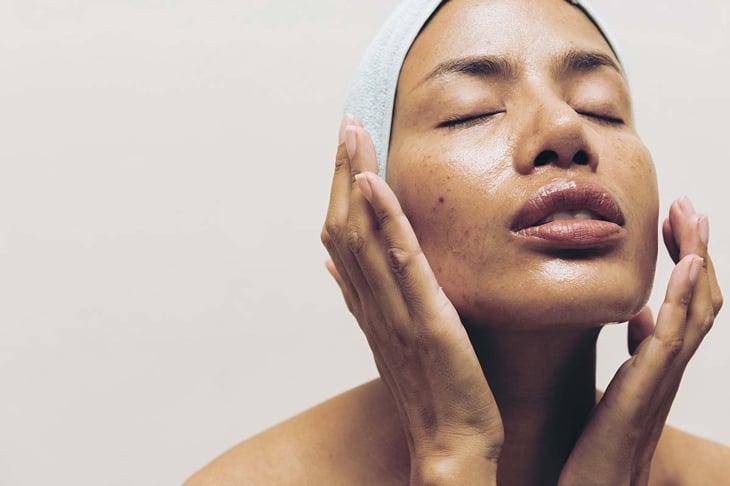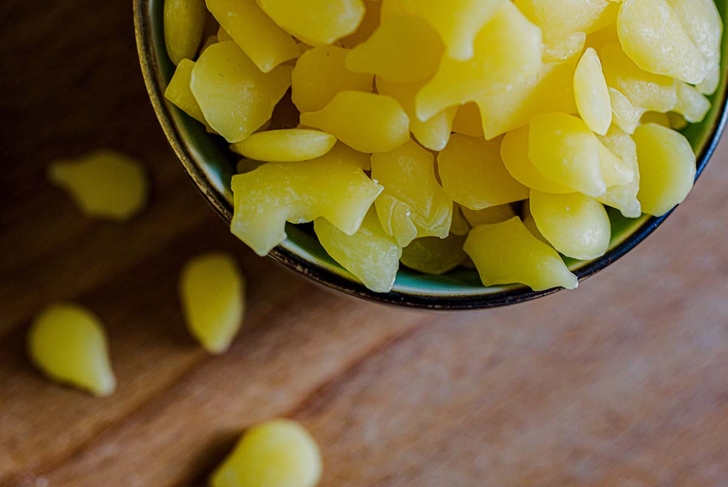
While it may sound a little out there, snail facials have become a popular skincare ritual in cities like Tokyo and London. Researchers believe that the snail mucus moisturizes and heals skin. If you’re not ready for snails slithering on your face, though, slugging is an effective substitute. Slugging has a lot of the same benefits of a snail facial (minus the mollusks). Consider this your slugging FAQ.
What is slugging?

No one knows the true origin of slugging. Some suspect it originated from a Reddit post, while others believe it was conceived in South Korea as part of a Korean beauty routine. No matter where it came from, slugging is one of the latest viral beauty trends—and for good reason.
Slugging involves applying petroleum jelly on your face overnight. Just like a snail facial, the intended result is smooth and glowing skin. It’s called slugging because after you slather on the petroleum jelly, it resembles a trail of snail or slug mucus across your skin.
How does it work?

Your skin has three layers. The epidermis, or outer layer, is considered your skin barrier. It defends your body against inflammation, ultraviolet rays, and other contaminants. It also regulates water intake and loss and keeps you hydrated. When the skin barrier is damaged, it can lead to itchy and dry skin and wrinkles. There are ways to protect your skin barrier, including slugging. Slugging moisturizes and protects the face.
What are the benefits of slugging?

To understand the benefits of slugging, we need to cover some basics about skin and the different types of hydrating ointments available. Moisturizing the skin diminishes fine lines, increases hydration, and reduces inflammation. As the body ages, skin loses moisture because it has fewer natural oils and less cell renewal. To fix this, moisturizing with quality products is key.
There are different types of hydrating ointments. Humectants, such as hyaluronic acid or aloe, pull water into the skin. Emollients, like cocoa butter and oils, soften and repair skin. Occlusives trap in moisture. Slugging works best when you use an occlusive cream on your face. Petroleum jelly, the most common slugging product, is considered an ultra-occlusive.
By slugging with an occlusive material, you’re able to hang onto that moisture overnight. Petroleum jelly only allows a tiny amount of water to escape from your face. Along with increased hydration, that occlusive cream protects the skin by blocking contaminants from entering the skin barrier. It also won’t allow any harmful bacteria or other impurities to enter your epidermis. Finally, slugging repairs damage by preventing water loss, allowing the skin to rehabilitate and replenish.
Who benefits from slugging?

Since slugging seals in moisture, it’s best for people with dry skin. When you have dry skin, you need more hydration than those who have normal to oily skin. Slugging with an occlusive is basically creating a new temporary skin barrier to protect your face and allow your skin to stay saturated.
Who shouldn’t try slugging?

For those with oily skin, there are other skincare routines that may be better suited for you. And remember—if you have an open cut or wound—skip slugging. It could result in a prolonged infection.
How do you do it?

Start with a clean face. Since the occlusive ointment seals in everything on your skin, you should remove any traces of dirt, makeup, and sunscreen. Trapping any impurities under the seal could result in pimples, so it’s important to wash your face.
Next, you should follow your evening skincare routine. This includes applying your humectants and emollients. Using products like hyaluronic acid and moisturizers before slugging is important because those hydrating balms absorb into your skin. When you “slug,” you’re basically keeping those hydrating creams locked in.
The last step is slugging. Take some of the occlusive and melt it with your hands and fingers. Slowly apply it all over your face. Be sure it’s soft enough that it glides onto your skin instead of tugging at it. Let the cream set for about 30 minutes before you go to bed, so it doesn’t get all over your pillowcase.
You can practice slugging several times per week in drier climates, but only need to do it once a week if it’s humid.
Are there any natural alternatives?

Since petroleum jelly is refined, it isn’t necessarily bad for your skin, but it’s made of oil byproducts. Unfortunately, it isn’t a sustainable product and can also be toxic if it isn’t processed properly.
If you’re interested in a more natural slugging cream, luckily there are several alternatives. These occlusives can be used in place of petroleum jelly for slugging:
- castor oil
- lanolin
- beeswax
- shea butter
- squalene





